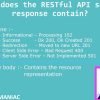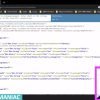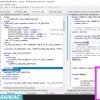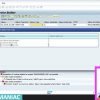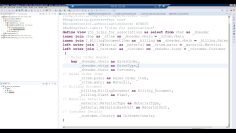This video tutorial provides a walkthrough on implementing ETag functionality in OData services using SAP’s programming language, ABAP. The ETag (or entity tag) is a part of HTTP, the protocol for the web. It’s used to determine change in content at a given URL.
Key sections covered in the video tutorial are:
- Introduction to ETag: The video starts by discussing how Create, Update, and Delete operations work with ETag. The presenter mentions that in the previous video, they discussed how ETag handling was done with the framework. In this video, they aim to override this default behavior and implement custom code for ETag handling.
- Prerequisites: Before diving into the main content, the presenter emphasizes the need to watch the previous video to understand the context.
- Overriding Default Behavior: The presenter demonstrates how to override the default behavior of the ETag by modifying the DPC (Data Provider Class) and MPC (Model Provider Class) in SAP.
- Debugging and Testing: Using the SAP debugging tool, the presenter shows how the system behaves when updating an entity with an old ETag value. The system throws a “precondition failed” error, indicating that the state of the resource has changed.
- Custom Implementation: The presenter then delves into the custom implementation of ETag. They discuss how to redefine certain methods to change the behavior of the system. They also touch upon locking mechanisms to ensure data integrity during update operations.
- Code Walkthrough: A significant portion of the video involves a detailed walkthrough of the ABAP code. The presenter explains each line of code, its purpose, and how it contributes to the overall ETag functionality.
- Testing the Implementation: After making the necessary code changes, the presenter tests the implementation using the SAP Gateway client. They demonstrate how the system behaves with the new ETag logic in place.





